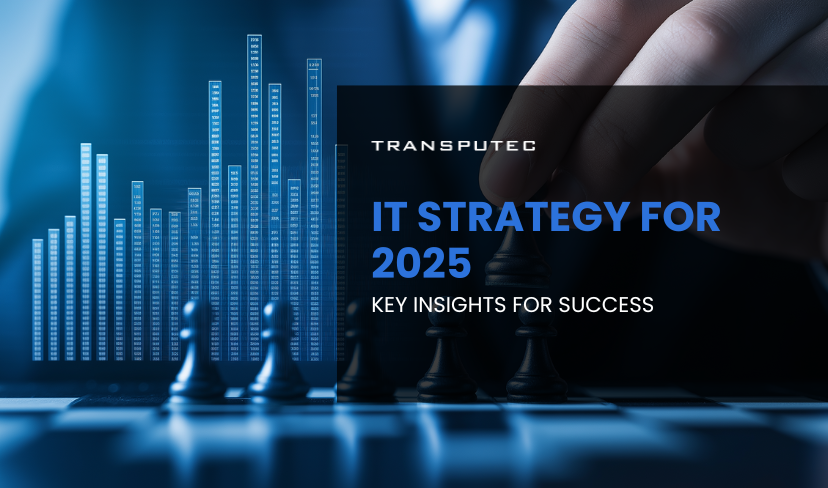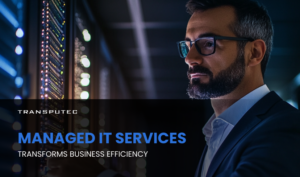Written by KRITIKA SINHA | MARKETING
In the race to outpace market challenges, businesses often falter because of unclear IT strategies, fragmented technologies, and rapidly evolving cyber threats. Employees bear the brunt of these missteps, dealing with inefficiencies, workflow interruptions, and security vulnerabilities. Meanwhile, leaders struggle with balancing innovation and cost management, ultimately risking productivity and growth.
This blog addresses these challenges by equipping you with the knowledge to successfully tackle “How to Plan Your IT Strategy for 2025.” From identifying trends and aligning technology with business goals to incorporating robust security measures, we’ll walk you through a step-by-step guide to future-proof your IT strategy. Practical, data-backed tips will help you emerge ahead of the competition.
Why IT Strategy Planning Is Essential for 2025
Technology no longer simply supports business—it drives it. Gartner reports that 91% of businesses are engaged in digital transformation, and by 2025, investments in emerging technologies are predicted to exceed $4.5 trillion globally. A clear and adaptive IT strategy helps organisations harness technology’s power while overcoming obstacles like:
- Rising cyberattacks: The cost of cybercrime is expected to hit $10.5 trillion by 2025 (Cybersecurity Ventures).
- Data-driven demands: Businesses require agile solutions for data analysis and customer experience improvement.
- Competitive pressure: Competitors increasingly rely on cutting-edge automation, AI, and cloud ecosystems.
Without a strong IT strategy for 2025, businesses risk irrelevance.
How to Plan Your IT Strategy for 2025
1. Define Your Business Goals and Align IT With Them
Your IT strategy must serve as a bridge between your company’s goals and technological implementation. Start by understanding priorities:
- Are you aiming for market expansion, enhanced cybersecurity, or operational efficiency?
- How can technology unlock these outcomes?
Practical Tip: Collaborate with cross-functional teams to understand pain points.
2. Keep a Pulse on Emerging IT Trends
Staying informed about IT trends helps you maintain a competitive edge. Key technologies dominating 2025 include:
- Artificial Intelligence (AI): Predictive AI is essential for automating tasks and personalising customer experiences.
- Cybersecurity Mesh: Decentralised approaches to cybersecurity offer heightened protection for dispersed workforces.
- Sustainable IT Practices: Focus on eco-friendly data centers and ethical tech development.
A Deloitte study reveals that 77% of CIOs believe digital transformation hinges on embracing emerging technologies.
3. Adopt a Risk-First Mindset to Security
With threats like ransomware attacks escalating, cybersecurity is critical. Protecting intellectual property, customer data, and operational integrity must be priorities. Implement these strategies:
- Deploy Zero Trust frameworks for comprehensive security.
- Regularly conduct penetration testing and security audits.
- Ensure compliance with regulations like GDPR or ISO 27001.
Actionable Data: Businesses that conduct bi-annual security audits reduce breach risks by 67% (IBM).
4. Strengthen Collaboration Between IT and Other Teams
Many organizations treat IT as a standalone department, but modern challenges require cohesive collaboration across the company. By engaging multiple departments:
- You’ll uncover blind spots related to workflow inefficiencies.
- Gain valuable insights into UX and performance enhancement.
Start holding cross-departmental IT strategy sessions to unify objectives.
5. Scale Up Infrastructure Without Overspending
The growing demand for IT services can escalate costs. Smart investments can ensure scalability without budget overruns.
- Opt for hybrid cloud solutions to balance private and public IT needs.
- Leverage cost-saving automation tools.
- Outsource select IT services (e.g., monitoring) through Managed Services Providers (MSPs) like Transputec, saving both money and time.
Fact: Adopting hybrid cloud models can reduce infrastructure expenses by 25% (IDC).
Want to see how much you could save in your IT Service Desk?
Try our IT Service Desk Calculator today and get a personalised quote tailored to your business needs.
Framework to Build an IT Strategy for 2025
Step 1: Audit Your Current State
Evaluate your IT infrastructure to understand strengths, gaps, and operational bottlenecks. Create a roadmap based on findings.
Step 2: Set SMART Objectives
Specific, Measurable, Achievable, Relevant, and Time-bound goals ensure progress. Example: “Shift 50% of workloads to the cloud by Q3 2025.”
Step 3: Create Scalable & Flexible Solutions
Technology adoption must remain adaptable. Building flexible solutions prevents constraints from derailing projects during market or company shifts.
Step 4: Prioritise Employee Upskilling
An IT strategy only works if the workforce supports it. Invest in tech training, upskilling, and change management programs to eliminate resistance.
Step 5: Collaborate with IT Experts
Leverage external expertise where needed, from strategists to IT service partners like Transputec, offering tailored insights and end-to-end implementation.
Benefits of a Strategic IT Roadmap
1. Enhanced Business Agility
A well-defined IT roadmap equips businesses to adapt swiftly to changing market conditions and emerging technologies. With clearly outlined milestones and contingency plans, organisations can pivot their strategies effectively when faced with disruptions, gaining a competitive edge in volatile environments.
2. Optimized Costs and Resources
Strategic IT planning identifies redundancies and allocates resources more efficiently, reducing unnecessary expenditures. By prioritising scalable and sustainable solutions, businesses can focus their budgets on innovation instead of maintaining outdated or underperforming systems.
3. Strengthened Cybersecurity
A roadmap built with security as a core pillar ensures proactive measures against cyber threats. It includes risk assessments, compliance adherence, and the integration of robust solutions like Zero Trust frameworks, reducing vulnerabilities and safeguarding critical assets against growing cyber risks.
4. Improved Alignment Between IT and Business Goals
When IT strategies are aligned with overarching business objectives, teams operate in sync, leading to higher productivity and cohesive decision-making. This alignment ensures that IT investments directly contribute to organisational growth, such as improving customer experience or driving operational efficiency.
5. Future-Ready Infrastructure and Technology
A strategic roadmap positions organisations to embrace emerging technologies like AI, IoT, and hybrid cloud models. This preparation ensures the infrastructure remains flexible and scalable, supporting both current and future demands while staying ahead of competitors in terms of technological capability.
Conclusion
Crafting an IT strategy for 2025 is essential to remain resilient in a rapidly shifting landscape. We’ve discussed actionable steps to align IT with business goals, prioritise security, embrace trends, and leverage scalable infrastructure. Data-backed insights are central to this approach, ensuring your IT strategy evolves proactively instead of reactively.
Now is the time to act! Let Transputec’s experts guide you in creating a customised, forward-thinking IT strategy. Contact us today to connect with an expert and take the first step toward building a smarter, safer, and more efficient IT environment.

Ready to experience the Transputec difference?
Contact us today to schedule a consultation with our cloud experts.
FAQs
What makes an IT strategy vital for 2025?
An IT strategy ensures your business can harness innovative technologies to meet demands, handle cyber risks, and remain competitive. Without a plan, companies may struggle with inefficiency, higher costs, and increased security vulnerabilities.
How can Transputec assist with IT strategy planning?
Transputec offers comprehensive IT consultancy services, including audits, strategy creation, and scalable implementation. We specialise in aligning IT goals with business needs, saving costs, and improving security frameworks.
How can cybersecurity be a central part of my IT strategy for 2025?
A strong strategy emphasises proactive security measures like penetration tests, zero-trust frameworks, and compliance regulations. Transputec provides tailored cybersecurity solutions, ensuring your business stays protected from ever-evolving threats.
What steps can small businesses take to create a robust IT strategy?
Smaller companies should focus on prioritising cloud adoption, risk assessment, and outsourcing IT services to experienced MSPs like Transputec. These steps reduce costs while ensuring enterprise-grade IT resilience.
Why is collaboration important in IT planning?
Integrating IT with other departments uncovers operational inefficiencies and ensures aligned priorities. Transputec excels at fostering collaboration through its customer-focused approach, helping businesses identify and resolve challenges comprehensively.







